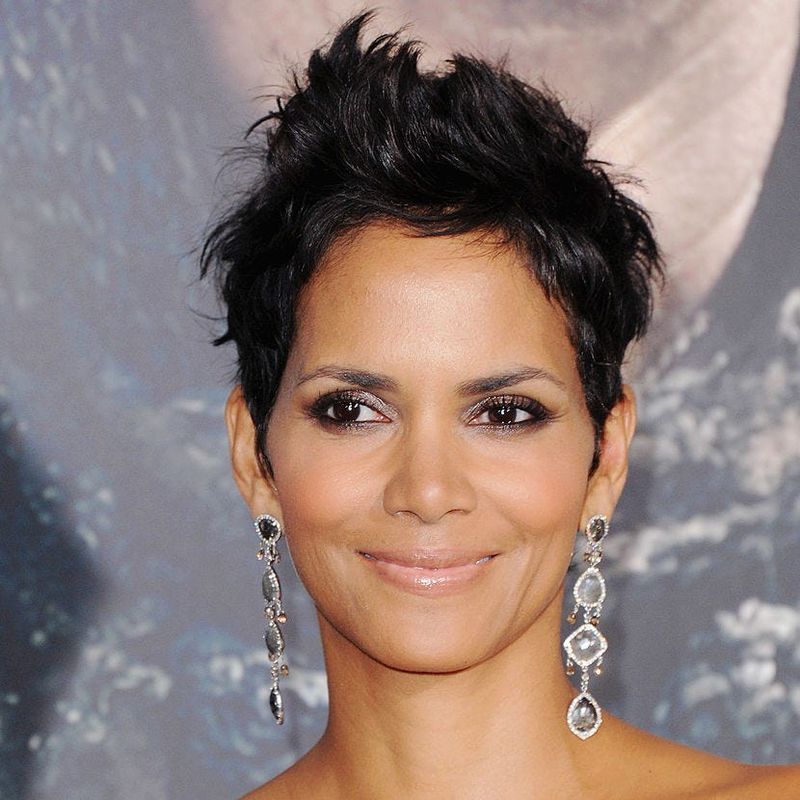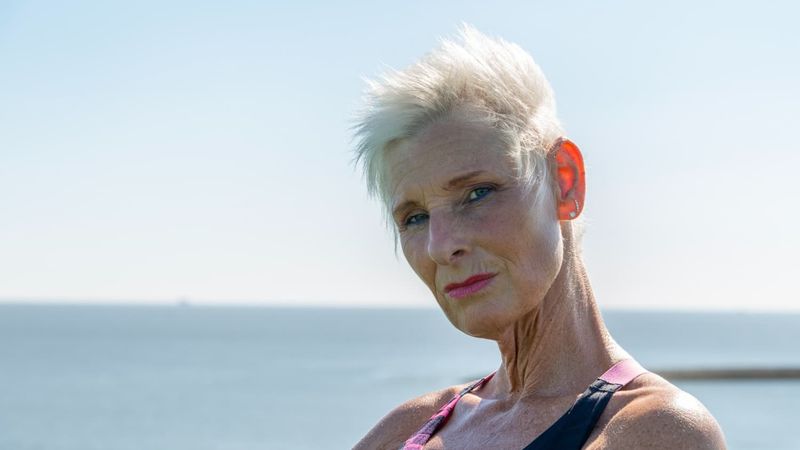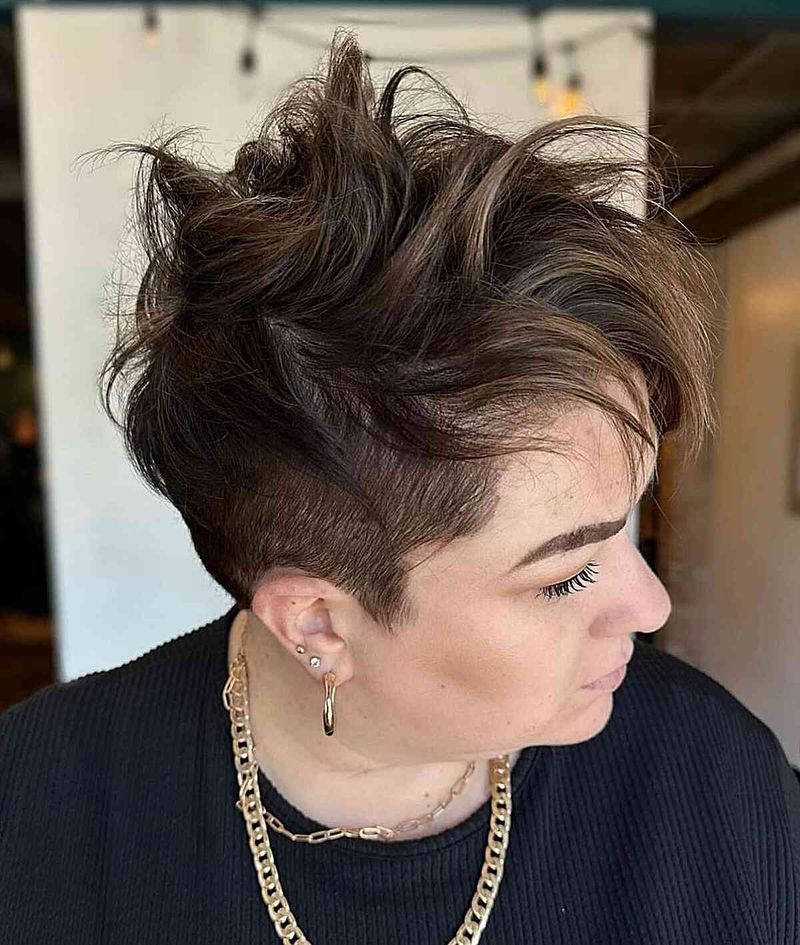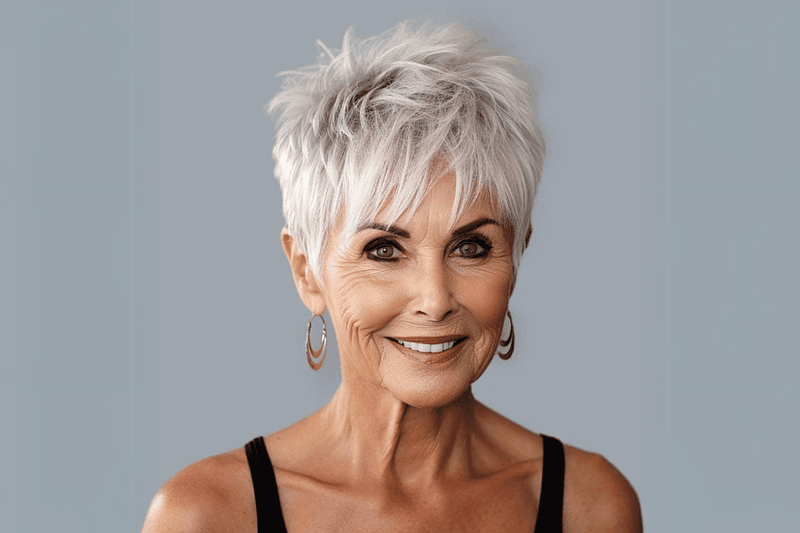Pixie cuts can be incredibly flattering, especially as hair starts to change with age—but not every version plays nicely with fine texture. After 60, hair tends to get a bit more delicate, and the wrong cut can end up highlighting frizz, flatness, or uneven growth instead of giving you that clean, fresh look you’re after.
The key is knowing what to avoid. Some pixie styles that look great on thicker hair or in perfectly styled photos can be frustrating in real life when you’re dealing with fine, aging strands. These are the cuts worth skipping—or at least tweaking—if you want a style that works with your texture, not against it.
The Undone Pixie

The undone pixie might seem effortlessly stylish, but for fine hair, it can be a frizz disaster. Without sufficient weight to hold it down, fine hair tends to fly away, creating a messy appearance.
Instead of achieving that chic, tousled look, the undone pixie often results in awkward tufts and uneven texture. This style can accentuate thinning areas, making it unsuitable for older women seeking fullness.
Consider styles with more structure and definition. Layered or asymmetrical cuts provide a polished look that enhances your natural volume and minimizes frizz.
The Spiky Pixie

Spiky pixie cuts can be edgy and youthful, but they’re often problematic for fine hair. The spikes require substantial product to maintain their shape, which can weigh down delicate strands.
For women over 60, this style can emphasize thinness, as the spikes highlight scalp exposure. This can lead to an unflattering, sparse look that lacks the intended boldness.
Seek alternatives like soft, textured pixies that provide gentle volume. These styles create an illusion of thickness without the need for heavy styling products, maintaining a natural, healthy appearance.
The Bowl Cut Pixie

The bowl cut pixie offers a bold, retro vibe, but it can be troublesome for aging, fine hair. With its uniform length and blunt edge, this style tends to flatten naturally fine hair, emphasizing its lack of volume.
Unfortunately, instead of a chic, mod look, it often appears helmet-like and static. This cut does little to enhance the hair’s natural flow or movement, further aging the wearer.
Opt for pixie styles with varied lengths and wispy ends, which introduce movement and prevent the dreaded flatness.
The Razor Cut Pixie

Razor cuts are known for their edgy, modern style, but they can spell trouble for fine hair, particularly in a pixie cut. The razor technique thins the hair ends excessively, leaving them frayed and fragile.
For older women, this results in an undesirable thinness and a dull appearance. The style lacks the bounce and fullness that fine hair desperately needs to appear vibrant.
Consider precision cuts with clean lines instead. These give the hair a fuller appearance and maintain its integrity, creating a youthful, lively look.
The Flat Top Pixie

The flat top pixie aims for a bold, structured aesthetic, yet it’s often a misstep for those with fine hair. The horizontal top can make fine strands appear even finer and more lifeless.
This style may also draw attention to thinning areas, resulting in a lack of confidence for those wanting a fuller look. Instead of achieving a contemporary edge, the flat top can age the face.
Seek out pixie cuts with more height and texture. These elements add a lively dimension, ensuring your hair looks full and youthful.
The Blunt Cut Pixie

Blunt cut pixies offer a sleek, straightforward appeal, yet they can be problematic for fine-haired seniors. The blunt edges lack the softness required to complement finer strands, leading to a stark, harsh appearance.
This style tends to highlight the scalp, as the hair struggles to cover the head evenly, revealing thinning areas. It also limits movement, resulting in a stiff, unnatural profile.
Explore softer, graduated pixies instead. These provide a gentle tapering effect that enhances volume and movement, creating a more flattering and dynamic look.
The Feathered Pixie

Feathered pixies evoke a light, airy feel, but for fine hair, they often lead to disappointing results. The excessive layering can strip the hair of density, leaving it looking sparse and uneven.
For those over 60, this style usually fails to deliver the desired fullness and can make the hair appear thinner than it already is. The lack of density is especially apparent in well-lit conditions.
Consider styles that incorporate gentle layers with more uniformity. This approach adds body without sacrificing the hair’s natural thickness and shine.
The High-Layered Pixie

High-layered pixies aim to add texture and volume, yet they can backfire on fine hair by removing too much bulk. This leads to a wispy, uncontrolled look that appears untamed and frizzy.
For older women, this style can emphasize aging hair’s fragility, offering little support to maintain shape. Instead of a dynamic, voluminous cut, it often results in a scattered mess.
Opt for balanced layers with controlled volume. These provide a structured, neat appearance while respecting the natural softness of fine hair.
The Choppy Pixie

Choppy pixies are celebrated for their edgy, playful look, but they can be a challenge for fine hair. The choppiness requires a certain density to look intentional, which fine hair often lacks.
This style can result in uneven patches and an uncontrolled frizz, creating a disheveled appearance. For those over 60, the cut may not provide the desired sophistication and can look untamed.
Seek pixie styles with smoother layers and strategic texturing. These offer a polished finish that enhances the natural beauty of fine hair without overwhelming it.
The Angular Pixie

Angular pixies feature sharp lines and dramatic angles, making them enticingly modern. However, for fine-haired seniors, these angles can create a harsh, unflattering frame.
The style can make delicate hair seem even thinner, emphasizing angles over softness. This can also accentuate facial lines rather than complement them, leading to a less youthful appearance.
Explore pixies with rounded edges and gentle curves. This approach softens facial features and enhances the hair’s natural volume, providing a graceful, ageless charm.
